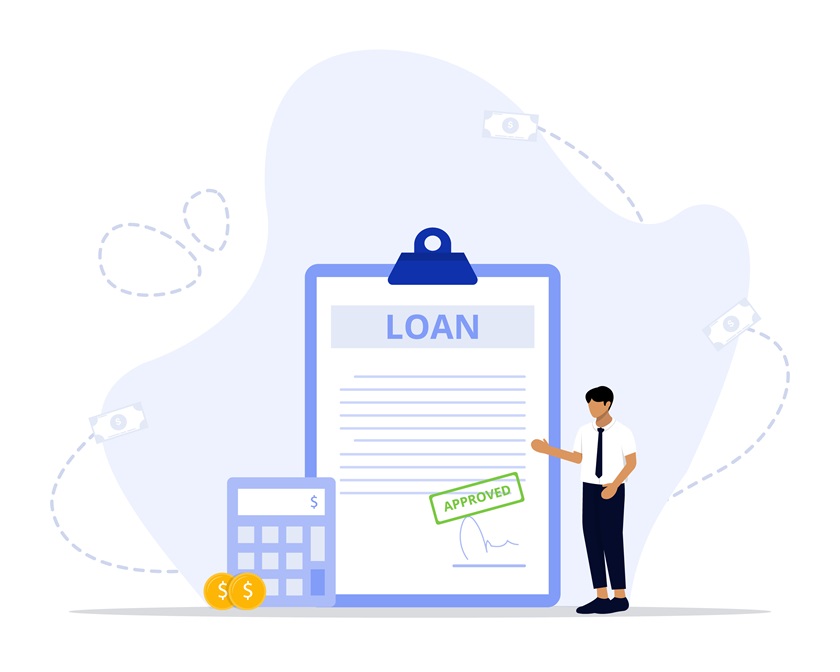Title loans provide a way to get fast cash in an emergency by borrowing against the equity in your paid-off vehicle. However, these loans charge higher interest rates and put your car at risk if you default. Before pursuing a title loan, it is essential to understand the eligibility criteria, document and application requirements, loan terms, pros and cons, and steps to getting started.
What are Title Loans?
Title loans are a type of secured loan where lenders offer cash in exchange for temporary possession of the title to your car, truck, motorcycle, or other vehicle. If approved, you keep driving your paid-off vehicle while making payments on the loan.
The lender places a lien on the car title during the loan term. If you stop making payments, they may repossess and sell the vehicle to recover their money. Title loans typically have 30-day terms but allow renewals or rollovers for additional fees. Interest rates run anywhere from 25% to 30% on average.
Why Do People Get Title Loans?
Consumers often choose title loans when they need fast cash but don’t qualify for other credit options. Reasons include:
- Emergency expenses like medical bills or home repairs
- Avoiding utility shut-off, eviction, or falling behind on other bills
- College expenses
- Small business cash flow emergencies
- Weddings, funerals, or other family needs
The quick approval decision, lack of credit requirements, and fast access to cash make title loans very appealing. However, it is critical to weigh the pros and cons before committing to their higher costs.
Eligibility Requirements
To qualify for a title loan, you must meet certain criteria. While specific rules vary by lender, the most common requirements for title loans are:
- Own Your Car Outright: You must hold sole legal title to your vehicle without any existing loans or liens from an auto dealer, bank, or other lender. Leased vehicles usually don’t qualify.
- Valid Driver’s License: Lenders verify your identity and legal driving ability using a non-expired license with your name and current home address.
- Meet Income Thresholds: Having a regular income over a minimum amount proves your ability to repay the loan. Many lenders require $1,200 or more per month from a job, benefits, retirement funds, or other consistent sources.
- Residency Status: You must legally reside in the state where you apply for the loan. The lender confirms residency using documents like utility bills or a rental agreement with your name and home address.
- Vehicle Condition and Value: The lender thoroughly inspects your car to ensure it is in reasonable working condition and retains sufficient resale value to secure the loan. Broken down or severely damaged vehicles usually don’t qualify as collateral.
- Credit History: While credit scores do not make or break approval decisions, they impact the loan terms and interest rates offered. Subprime borrowers pay higher rates but may still qualify.
Document Requirements
In addition to proving eligibility, you must provide documentation confirming your identity, ownership claim, and legal ability to take out a loan. Essential documents include:
- Vehicle Title: The car title proves sole legal ownership and your exclusive right to offer the vehicle as collateral. The title cannot have liens from other lenders.
- Driver’s License: Your license helps verify identity and residency while proving you can legally drive the vehicle used as collateral.
- Proof of Income: Recent pay stubs, bank statements, tax returns, or other paperwork validate your reported income amount to determine loan size and repayment ability.
- Proof of Residency: Lenders verify where you live using documents like current utility bills, a rental agreement, a bank statement, or other paperwork with your name and physical address.
- Vehicle Registration and Insurance: Updated registration and valid insurance demonstrate roadworthiness and protect the collateral vehicle.
- Providing complete, valid documents helps avoid delays in getting your loan approved and funded.
Pros and Cons of Title Loans
While title loans offer fast approval and cash availability, weighing their advantages and disadvantages is critical before moving forward.
Potential Benefits
- Get cash quickly with minimal eligibility requirements
- Continue driving your vehicle while repaying
- Bad credit usually does not disqualify you
- Few limitations on how to use the money
Possible Drawbacks
- Very high interest rates averaging 25%+
- Short repayment terms with single balloon payments
- Risk of vehicle repossession and sale to settle defaulted loans
- Repeated loan rollovers sink you deeper into debt
Clearly understanding these trade-offs allows you to make a well-informed and responsible borrowing decision.
Getting Started with a Title Loan
Here are the basic steps if you decide to pursue a title loan:
Research Reputable Lenders
Not all title loan companies are created equal. Read online reviews and complaints with an eye out for predatory lending practices or hidden fees. Local lenders may provide better service.
Gather Required Documents
Locate the necessary paperwork proving your identity, ownership rights, residency, and income in advance to speed up the application process.
Complete Application and Interview
Apply online or by visiting a title loan store location. Be prepared to answer questions about your car, job, income, living expenses, and reason for borrowing.
Inspection and Valuation of Vehicle
A representative will physically inspect your car’s condition, features, mileage, and maintenance records to estimate its resale value if repossessed. This helps determine approval odds and loan amount.
Secure Approval
The lender makes an official loan decision in minutes based on your eligibility, documents, income level, and vehicle valuation. Disapprovals occur if paperwork raises red flags or the vehicle needs more value.
Review Loan Terms
Ensure you understand the loan amount, interest rate, monthly payment, overall cost totals, and collateral consequences of default before signing anything. Don’t hesitate to clarify or ask questions.
Receive Your Funds
You decide whether to accept the loan terms and continue the process if approved. The lender transfers cash electronically to your bank account, usually the same or the next business day.
Make Payments
The lender automatically withdraws monthly payments from your checking account per your signed loan agreement dates. Stay current to avoid late fees, credit damage, and vehicle repossession.
Understanding what title loans entail beyond fast cash allows you to determine if one aligns with your short-term borrowing needs. Weigh the eligibility rules, document requirements, and repayment considerations carefully while in need. Educated borrowers make empowered financial decisions.









